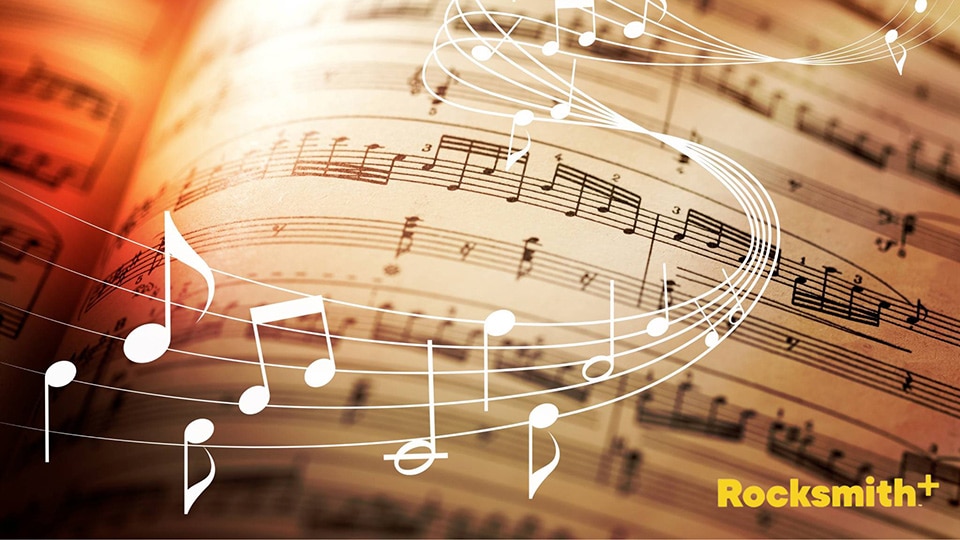From the ornate courts of the Renaissance era to the contemporary concert stages and digital devices of today, learning to read sheet music remains an essential blueprint for pianists to interpret and convey musical compositions. In many ways, sheet music is the bridge between the composer's imagination and the performer's expression.
The evolution of sheet music has transformed it from handwritten notes on parchment to digital displays, but the essence remains unchanged. In today's musical landscape, understanding sheet music can unlock a treasure trove of history, culture, and emotion.
1. The Basics of Reading Piano Notes
At the heart of piano sheet music lies the grand staff, a combination of the treble clef, played with the right hand, and the bass clef, played with the left hand. These staves are the canvases on which notes from A to G are plotted, representing the piano keys. Each note has a specific position on the lines or spaces of the staff, with its pitch rising as it moves upwards.
There are different musical symbols that represent different rhythmic durations. Whole notes, represented as hollow ovals, last for four beats. Half notes, with their hollow oval and a stem, last for two. Quarter notes, filled ovals with stems, denote one beat, and the pattern continues with eighth notes, sixteenth notes, and so forth.
Complementing these notes are the rests, symbols that signify silent beats in the music, giving it space and breathing room.
2. Learning Key Signatures and Scales
![[RS+] Piano Notes Sheet Music: Read, Play, Excel SEO ARTICLE - key signatures and scales](http://staticctf.ubisoft.com/J3yJr34U2pZ2Ieem48Dwy9uqj5PNUQTn/ldTpuzY4J6dXfHJsfdKF0/f004701344d9bcec169d8599cae221b7/sheet2.jpeg)
Delving deeper, we encounter key signatures, which pinpoint the tonal center of a piece. Each key signature indicates a specific set of sharps (#) or flats (♭) that correspond to the notes to be modified in pitch throughout the composition. Familiarity with the circle of fifths can be a helpful tool in remembering and understanding these signatures.
Scales, particularly major and minor, are sequential arrangements of notes that form the foundation of many musical compositions. C Major scale, for instance, runs from C to C with natural notes, whereas its relative A minor scale contains the same notes but offers a distinctly different mood.
Incorporating these foundational elements, you can begin to see the structure and patterns inherent in sheet music, paving the way for more nuanced interpretations and deeper connections with the compositions.
3. Reading Rhythms
Rhythm, often referred to as the heartbeat of music, comes alive through time signatures. Each piece of sheet music begins with a specific time signature, such as the common 4/4, indicating four beats per measure. But music isn't confined to this single rhythm.
We have waltz-friendly 3/4, the flowing 6/8, and more intricate rhythms that give character to classical compositions and more.
Within these frameworks lie rhythmic nuances. Syncopation introduces off-beat accents, creating a playful challenge. To master this, practicing with a metronome can be invaluable, ensuring consistent beat maintenance.
4. Understanding Expression and Dynamics in Sheet Music
While notes and rhythms form the skeleton, dynamics and expressions are the soul. Articulation marks guide how a note should be played: a dot above a note for a brief, detached staccato, or a curved line connecting notes for a smooth, flowing legato.
Dynamic markings, on the other hand, dictate volume. From the softest "pp" (pianissimo) to the loudest "ff" (fortissimo), these notations guide the pianist's touch. Crescendos and decrescendos, represented as widening or narrowing wedge shapes, signal gradual volume increases or decreases, adding emotional layers to performance.
5. The Importance of Sight Reading
![[RS+] Piano Notes Sheet Music: Read, Play, Excel SEO ARTICLE - sight reading](http://staticctf.ubisoft.com/J3yJr34U2pZ2Ieem48Dwy9uqj5PNUQTn/2IQN64H6EQcVhiNMkD0ccA/159bf18c6eeaa569c28e0b259baeacbf/sheet3.jpeg)
Sight-reading --- the ability to play a piece of music upon first viewing --- is a powerful skill and often a necessity for professional pianists. It fosters quick musical comprehension and adaptability, and sharpens intuition.
For a budding piano player, regularly practicing sight-reading can significantly improve your overall musical prowess, boosting confidence in unfamiliar situations.
Start by immersing yourself in unfamiliar pieces daily. Begin with simpler piano songs, focusing on accuracy over speed. Gradually challenge yourself with more complex works. Dedicate a segment of your practice solely to sight reading, resisting the urge to revisit mistakes immediately.
Instead, complete the piece and then analyze it. Utilize tools like rhythm clapping to solidify rhythmic understanding. Above all, cultivate patience and perseverance. Like any language, fluency in sight reading comes with consistent exposure and practice.
A useful approach is setting aside dedicated time in practice sessions solely for sight-reading. By exposing oneself to diverse musical genres and styles, one can develop this skill more holistically. This agility not only aids in performance but also enriches a pianist's understanding and appreciation of the vast world of music.
How To Bridge the Gap Between Reading and Playing
While understanding the symbols on sheet music is crucial, true magic occurs when you're able to translate this knowledge into motion and sound. The piano, with its vast range of notes and dynamic capabilities, requires you to use both hands in harmony, often interpreting different rhythms and melodies simultaneously.
This idea can be intimidating. In the early stages, you might focus on one hand at a time, familiarizing yourself with each part's nuances --- but as your confidence grows, your hands merge, creating a seamless blend of harmony and melody. As you're learning, it can be helpful to label the black keys and white keys on your piano with the corresponding note names to help bridge your music-reading skills and playing skills. As you grow more comfortable, you can work your way up to removing the labels.
![[RS+] Piano Notes Sheet Music: Read, Play, Excel SEO ARTICLE - reading and playing](http://staticctf.ubisoft.com/J3yJr34U2pZ2Ieem48Dwy9uqj5PNUQTn/KQunDrmHZ13dW7Ts31IpK/c6a4f421708830795d68f9762df1bda0/unnamed__8_.jpg)
Along with this coordination, it's key to remember the emotional intent behind each piece, as a note conveys a sound as well as a sentiment. Whether it's the gentle touch required for a pianissimo passage or the vigorous force of a fortissimo, the pianist's connection to the piece's emotion can significantly elevate their performance.
Regular practice isn't just about repetition --- it's a conscious effort to form a deeper bond with the music. This journey can be tricky, but it's incredibly rewarding. Every practice session provides an opportunity to refine technique, enhance interpretive skills, and discover newfound layers in familiar pieces.
What Are the Benefits of Mastering Sheet Music Reading?
For pianists, sheet music acts as a gateway to the expansive world of music. By mastering the art of reading sheet music, pianists can unlock the potential to explore compositions ranging from Baroque music to modern minimalism and everything in between.
Sheet music isn't just a guide, but a foundation. Once a musician understands the framework of a piece, they gain the freedom to improvise, adding personal flair and creating unique interpretations. This deep understanding also aids in collaborative settings. Whether it's accompanying a singer, joining an ensemble, or playing in a full-scale orchestra, the ability to read and interpret sheet music quickly becomes indispensable.
Furthermore, the discipline and focus required to decipher complex musical notations invariably cultivate cognitive skills. Multiple studies have shown that musicians often exhibit enhanced memory, attention to detail, and spatial-temporal skills. Hence, the journey of mastering piano sheet music is not only a musical adventure but also an intellectual and emotional odyssey, enriching the mind, heart, and soul.
Resources and Tools for Further Learning
In the age of information, pianists are fortunate to have a plethora of resources available to hone their sheet music reading skills. Traditional piano method books, like those by Alfred, Bastien, or Faber, have been mainstays for decades. They offer graded approaches, guiding students from basic note recognition to intricate performance pieces.
However, the digital revolution has provided an infusion of tools that cater to modern learners. Rocksmith+ not only offers interactive tutorials, but also tracks progress, adapting to each user's pace. With Rocksmith+, you can get instant feedback, bridging the gap between traditional teaching and self-guided learning.
The Everlasting Echo of Piano Mastery
The journey of understanding piano sheet music is a continual dance of challenge and reward. With each note decoded, each rhythm internalized, and each piece mastered, pianists find themselves deeper in love with the instrument and its limitless expressive potential.
As you continue finetuning your skills, the piano becomes an extension of who you are --- helping you express emotions, tell stories, and convey specific feelings.
Sheet music is more than symbols on paper or pixels on a screen. It's a universal language that transcends borders, time, and generations. No matter where you are on your piano-playing journey, Rocksmith+ can meet you there. Explore Rocksmith's piano song library of over 300 songs, and expand your skills.
Sources:
Basics You Need to Know For Reading Sheet Music | Emastered
About Sheet Music | Duke University
OTHER ASPECTS OF NOTATION | Open Music Theory
Circle of Fifths: The Key to Unlocking Harmonic Understanding | Berklee Online Take Note









